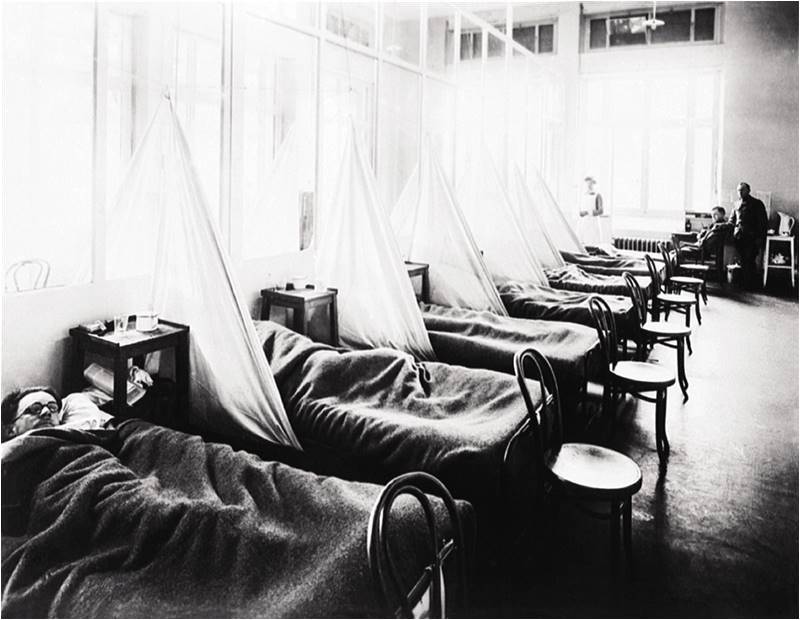
This photograph shows American Expeditionary Force victims of the Spanish flu at U.S. Army Camp Hospital no. 45 in Aix-les-Bains, France, in 1918.
The Spanish flu (also known as the 1918 flu pandemic) was an unusually deadly influenza pandemic. Lasting from January 1918 to December 1920, it infected 500 million people — about a quarter of the world’s population at the time. The death toll is estimated to have been anywhere from 17 million to 50 million, and possibly as high as 100 million, making it one of the deadliest pandemics in human history.
To maintain morale, World War I censors minimised early reports of illness and mortality in Germany, the United Kingdom, France, and the United States. Newspapers were free to report the epidemic’s effects in neutral Spain, such as the grave illness of King Alfonso XIII, and these stories created a false impression of Spain as especially hard hit. This gave rise to the pandemic’s nickname, Spanish flu. Historical and epidemiological data are inadequate to identify with certainty the pandemic’s geographic origin.
The Spanish flu (also known as the 1918 flu pandemic) was an unusually deadly influenza pandemic. Lasting from January 1918 to December 1920, it infected 500 million people — about a quarter of the world’s population at the time. The death toll is estimated to have been anywhere from 17 million to 50 million, and possibly as high as 100 million, making it one of the deadliest pandemics in human history.
To maintain morale, World War I censors minimised early reports of illness and mortality in Germany, the United Kingdom, France, and the United States. Newspapers were free to report the epidemic’s effects in neutral Spain, such as the grave illness of King Alfonso XIII, and these stories created a false impression of Spain as especially hard hit. This gave rise to the pandemic’s nickname, Spanish flu. Historical and epidemiological data are inadequate to identify with certainty the pandemic’s geographic origin.

